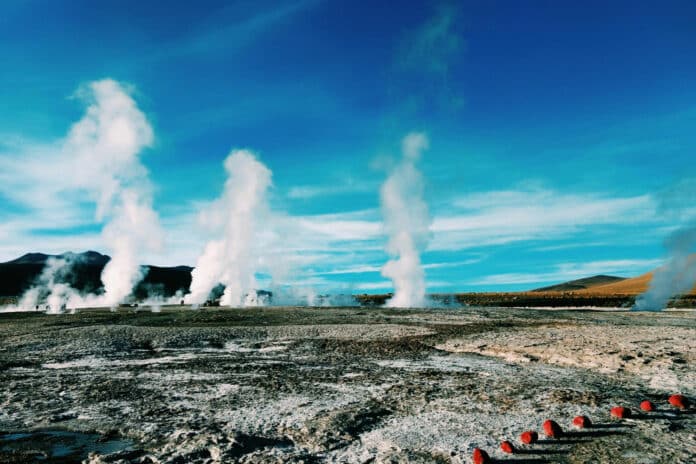Climate change is a critical issue that affects our planet, and it is caused by increased carbon dioxide (CO2) levels in the Earth’s atmosphere, which is mainly a result of human activities such as burning fossil fuels for electricity, heat, and transportation.
Due to the accumulation of greenhouse gases, scientists and researchers worldwide are looking for efficient carbon capture and storage methods. Unfortunately, existing methods are often expensive and energy-intensive, which can lead to more greenhouse gas emissions.
In a new study, researchers from Ohio State University have developed an innovative method for capturing carbon dioxide from the atmosphere, powered by clean and relatively inexpensive geothermal energy.
According to their study, by combining direct air carbon dioxide capture technologies (DACC) and geothermal energy, large-scale carbon dioxide (CO2) removal systems could potentially generate enough energy to remove carbon dioxide from the atmosphere and safely store it underground.
Traditional DACC (Direct Air CO2 Capture) methods are not only expensive but also require a significant amount of energy, which can contribute to greenhouse gas emissions.
The new approach called Direct Air CO2 Capture with CO2 Utilization and Storage (DACCUS) aims to integrate recycled carbon dioxide into the system to make it more efficient. The method uses the natural heat stored in deep saline aquifers beneath the Earth’s surface to produce renewable energy continuously for DACC systems.
The captured carbon dioxide from the air is isolated in these geologic formations, and a portion of it can be circulated to extract the geothermal heat, which can be used directly or converted into electricity to power the system.
DACCUS also uses captured CO2 to improve the efficiency of geothermal energy extraction. It can circulate the CO2 underground to bring geothermal heat closer to the surface and make power plants cleaner and more efficient without needing extra fossil fuels. Geothermal energy has a small carbon footprint, and this particular approach is even lower because it uses carbon dioxide.
To demonstrate the potential of their system, the researchers developed a case study that focused on the U.S. Gulf Coast region, which is known for having ample geothermal resources.
“The Gulf Coast also has the right geology to safely put carbon dioxide underground and a decent enough heat flux that its geothermal energy could be sufficient to use,” said Jeff Bielicki, co-author of the study. “These characteristics are very favorable.”
For the DACCUS system to work, the geothermal heat extraction system first has to be primed by storing carbon from point sources like factories emitting carbon dioxide before it even starts extracting greenhouse gas from the air.
If the system is operational by 2025, it could potentially start removing carbon by 2030. There could be 25 DACCUS systems set up in just one of the 27 geologic formations on the Gulf Coast by 2050.
The development of DACCUS marks a significant advancement in carbon capture and storage (CCS) technologies that show how combining different fields of research and renewable energy sources can help society meet the current goal of limiting Earth’s warming while averting some of the worst consequences of climate change.
“New technologies can enable one another, and in integrating them, we can tackle climate change,” said Martina Leveni, lead author of the study. “There’s a lot of work to be done to take into account technological readiness and the policies needed to make that research happen.”
Journal reference:
- Martina Leveni and Jeffrey M Bielicki. A potential for climate benign direct air CO2 capture with CO2-driven geothermal utilization and storage (DACCUS). Environmental Research Letters, 2023; DOI: 10.1088/1748-9326/ad0924
